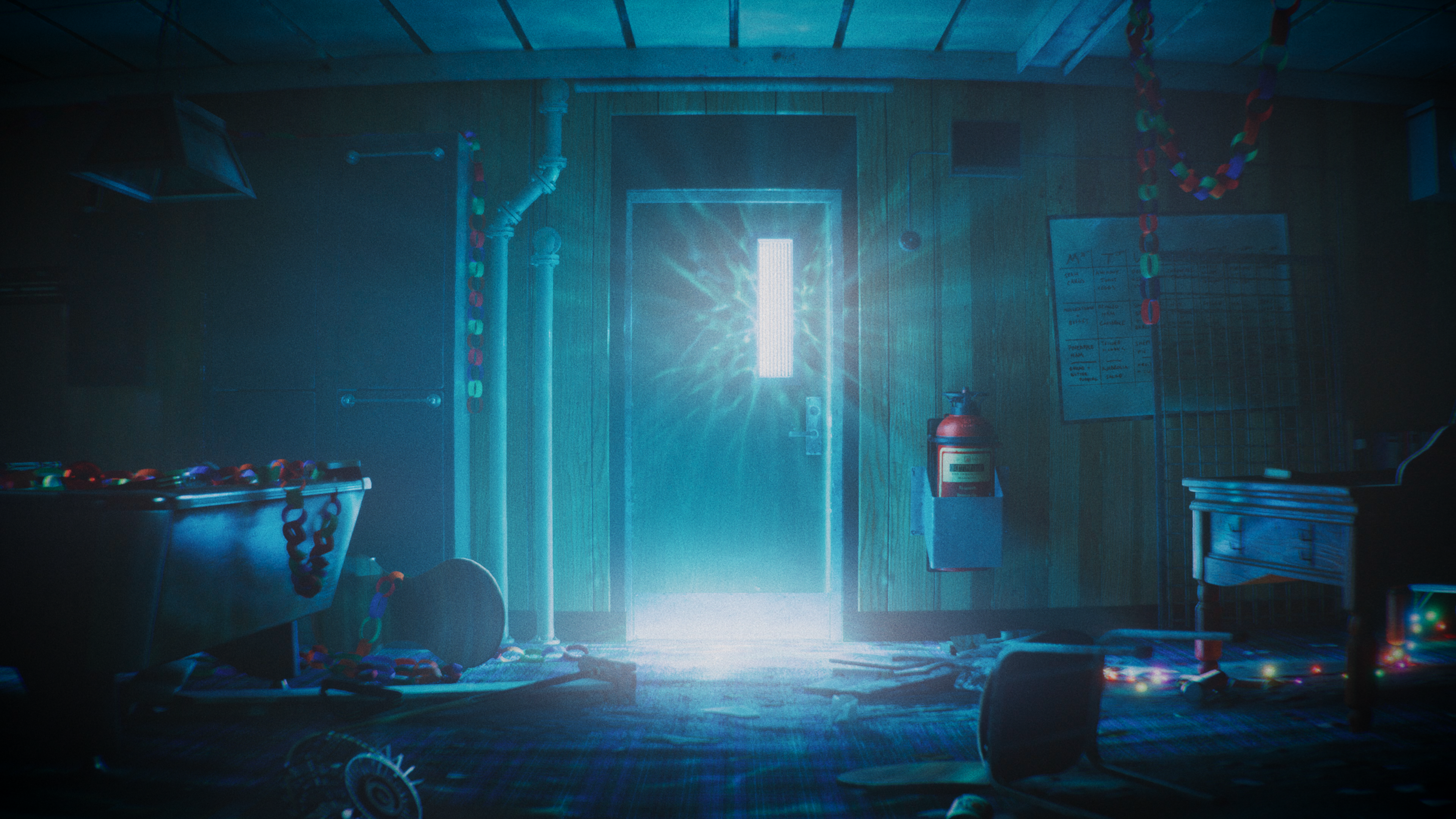
Midway into development of the newly released horror game Still Wakes The Deep, developer The Chinese Room gambled and decided to switch from developing using Unreal Engine 4 and moved to Unreal Engine 5 . It's a move that paid off. You can read my Still Wakes The Deep review to discover just how well this roll of the dice turned out (hint: it's fantastic) but getting there was a creative journey worth exploring.
Ahead of the game's release I sat down with associate art director Laura Dodds and principal environment artist Dominique Buttiens to dig into what went into bringing this gory, grotesque but beautiful and exotic horror game to life. The blend of 1970s period detail with an isolating oil rig setting, cosmic body horror and the detail Unreal Engine 5.3 (specifically) delivers is like nothing else.
The game features authentic era-details, subtle storytelling and plays on every phobia you can think of to put the player on edge. It blends the body horror of The Thing with the luminance and floral motifs of Annihilation. And surrounding everything is the fog, drizzle and crashing waves of the North Sea. Bringing this all to life the team turned to Unreal Engine 5, in particular light using Lumen, its geometry system Nanite and water physics.
Building the world of Still Wakes The Deep
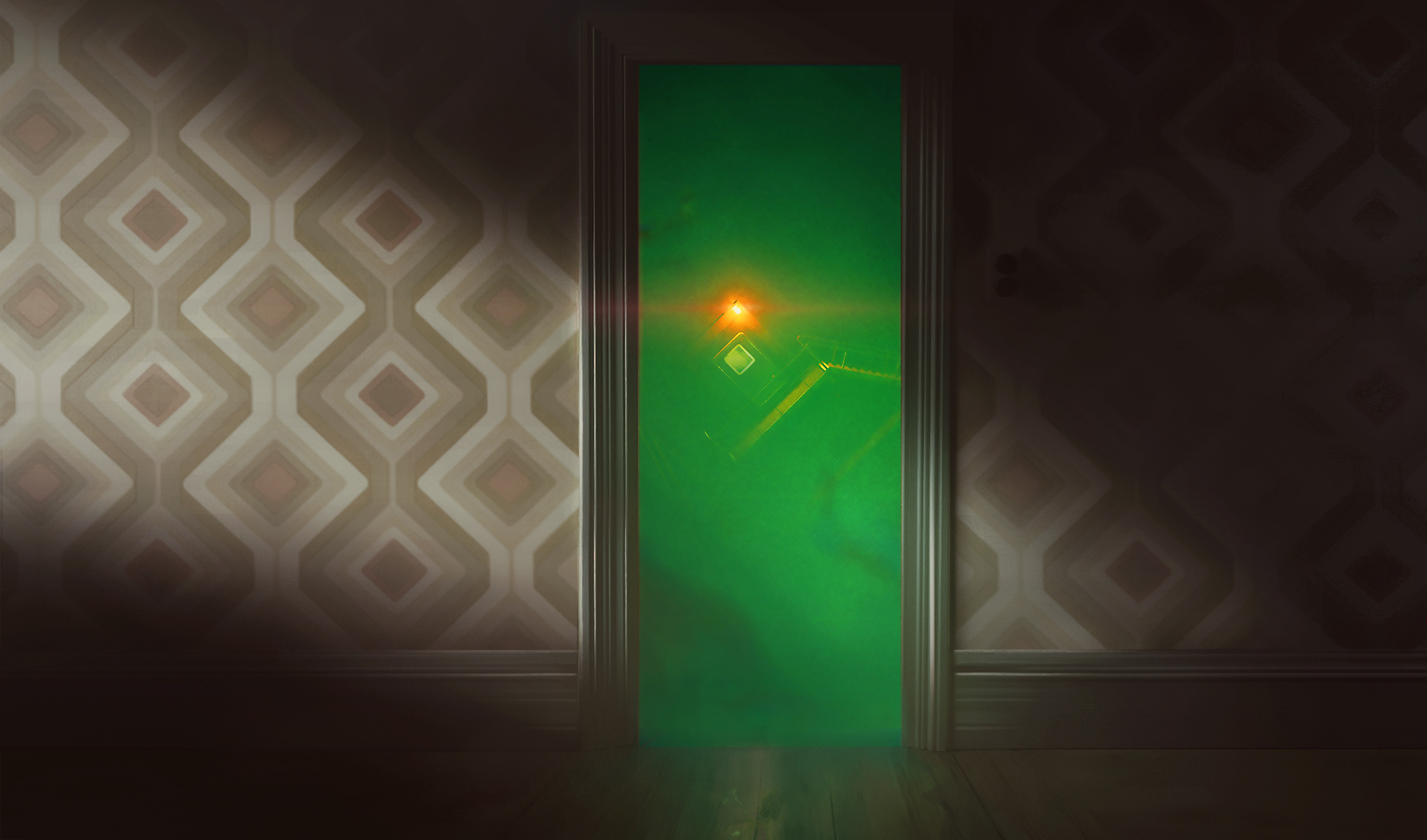
To sell the game's cosmic horror the art team first began by ensuring the setting, a 1975 oil rig, feels as authentic and natural as possible. A solid, believable game world makes the supernatural chaos more effective.
Laura recalls trying out all kinds of "cheap office furniture" and the lighting team even brought in samples of wood veneers, ceiling panels and plastic casing to cover lights, to get "really accurate colours and light values" for how different fixtures will look and react. The level of detail is staggering.
"That all helped because authenticity was a cornerstone of art direction," she says, revealing how every effort was taken to research oil rigs, "but also the detail of how people lived on the rigs in the 1970s". The aim was for an authentically Scottish designed world, "so getting lots of tartan carpets and even looking at menu designs that would evoke a strong Scottish feeling".
The game has an intricately crafted world, one that celebrates every corner of a 1970s oil rig, from its industrial bowels to the Boho-designed curtains, stickers and posters with era-accurate fonts, typography, logos and branding. "[These are] things that are really going to bring it to life as human experience as much as a functioning oil rig," says Laura. "We all became massive oil rig nerds."
Unreal Engine 5's Lumen lights the way
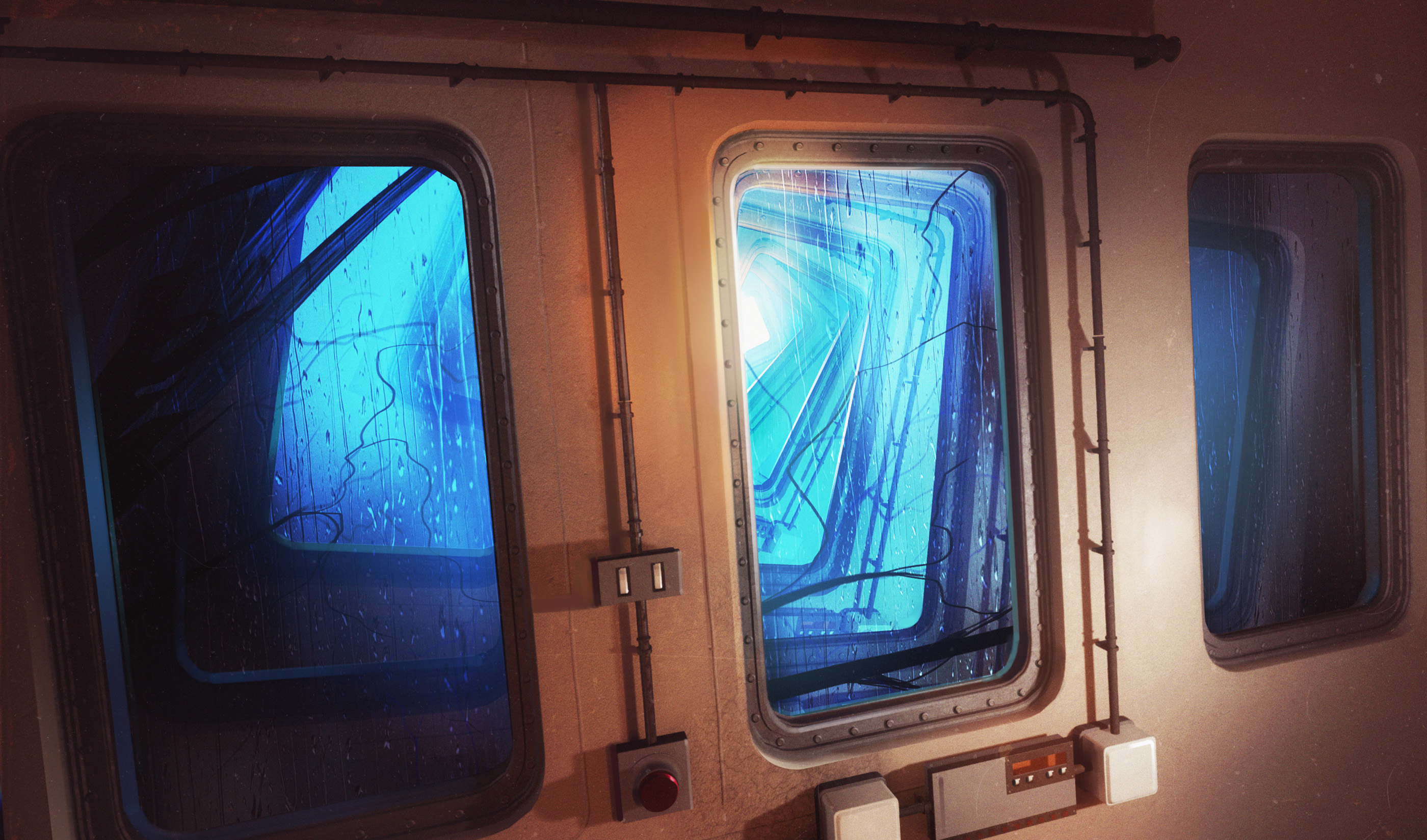
Due to the team's research everything, from the texture work of the wooden veneers of accommodation block to naturalistic lighting that recalls the films of Ken Loach, needed to be perfectly judged. "Nailing our aesthetic really, really helped by switching over to Lumen [in Unreal Engine 5]," says Laura.
Dominique Buttiens laughs as he tells me he loves talking tech, and explains: "We were very keen on playing with Lumen because its strength is its real time, which was very interesting for us because we were iterating a lot. Light maps was just a huge bottleneck for us, both for time in production, but mostly because it prevented us from iterating quickly and trying out different things."
But art direction and achieving the right feel was just as vital to Still Wakes The Deep, recalls Dominique: "The other thing with Lumen is that it's very strong with natural lighting, because it gives a lot of realistic ambient light and bounce light. So for the style of naturalism it was very, very important to us."
Creating the character of water
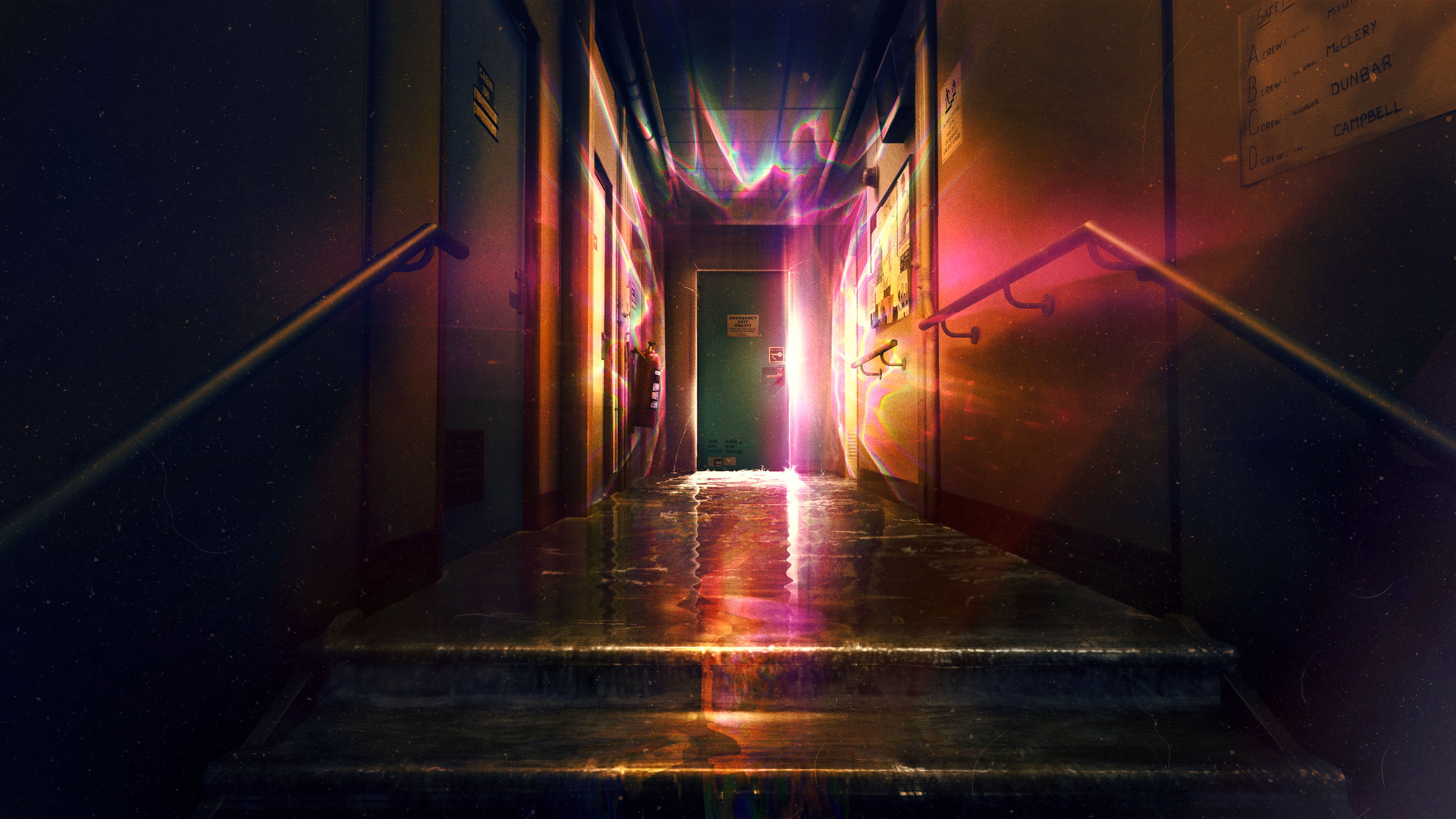
Water is notoriously hard to get right in games and simulations, and the North Sea setting of Still Wakes The Deep ensures this tricky substance is handled like no other game. "It needs to feel like the water is trying to kill you," laughs Laura as she recalls the pitch document from writer and creative director Daniel Pinchbeck.
Dominique tells me he loves how the art team has managed to replicate the "grey, grainy, miserable Scottish weather. We just wanted to make everything look wet, like drenched," he stresses, smiling, "It's really silly, but I was very pleased with that".
From an art direction standpoint this all gathered to make the water dirty and personal, "it wants to kill you," says Laura. She describes how the art team looked at various types of water and how it will look and flow in different areas of the oil rig, from the swells below to the oil-layered floods through the crew's accommodation.
"It's got personal artefacts floating in it and it's dirty," reflects Laura, adding: "So we got tons of different visual references to make sure it felt dirty and terrifying… you don't want to go in."
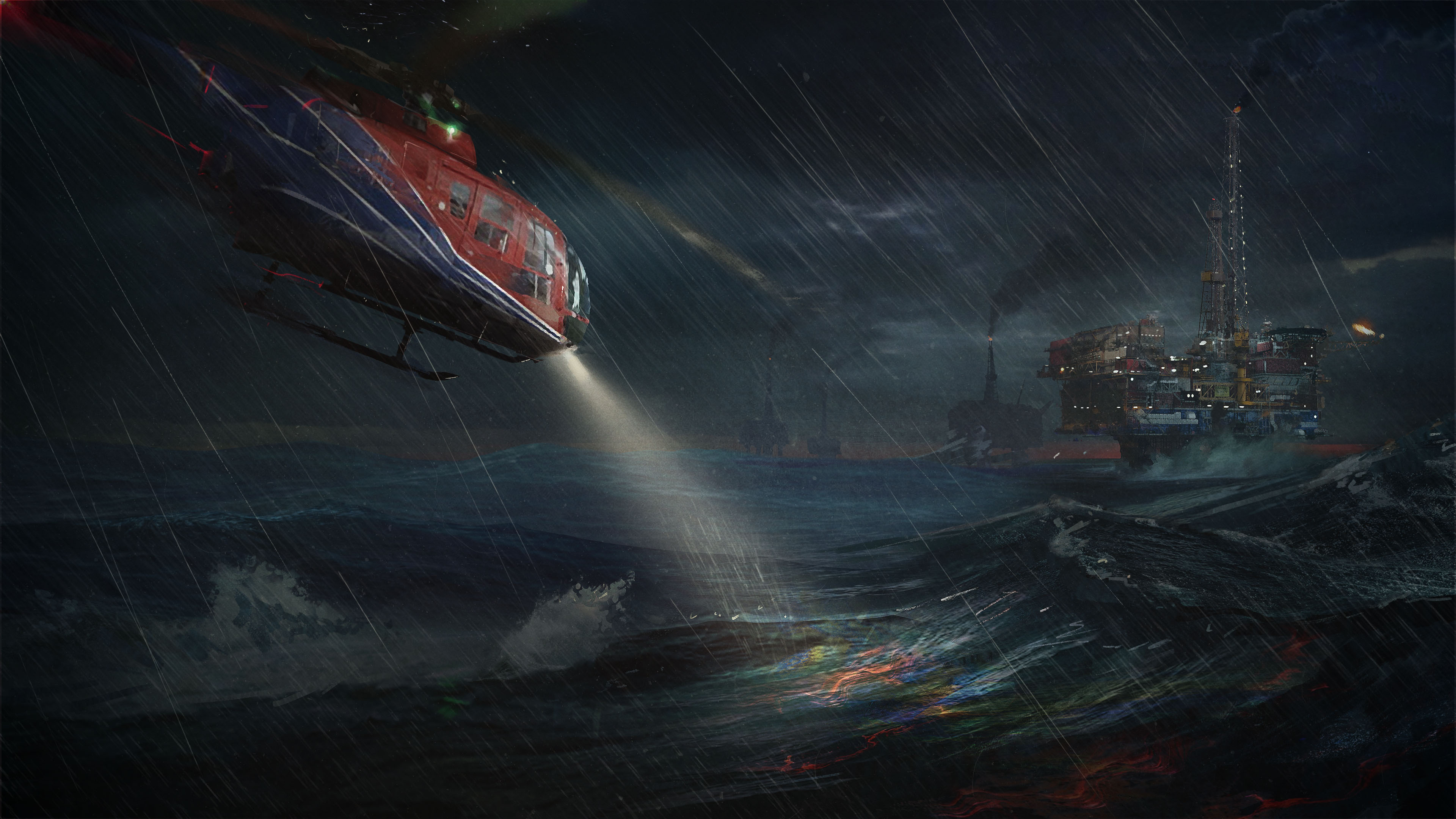
The need for realism ensured the approach to water, as a character, feels consistent and realistic. Dominique Buttiens explains: "If water comes into a space, what else is going to be in the water? That was the first step, just thinking of a conceptual point like 'okay, that's going to have rust, dirt, bits of the paint flaking off'; If the water is coming down from a pipe it will drag cigarette butts with it".
All of this came to life in Unreal Engine 5 as the tech team were able to create the "magic", as Laura says, to make use of "so much cutting edge tech" to create "real time flooded environments".
The game uses Gerstner waves, real time reflections and physics to create realistic swells, eddies and flow dynamics. The water is thick and viscous in places as oil mixes with water, and it's sloppy and it moves at different speeds.

The opening shot of the game sees the camera float over the waves of the North Sea towards the oil rig emerging from the fog. Dominique says many people expected this to be a pre-rendered cinematic, "because water doesn't look like that in games".
He explains: "We use lots of different layers of tech and art together. And there's a lot of variation in the different volumes of water throughout the game. We went through a lot of iterations right up until release just to get the feeling right. There's a different moisture in the air. Sometimes you'll be trapped in a steamy room."
Water vapour was just as vital for the atmosphere too, says Dominique: "Sometimes you'll be outside where there's still high moisture, but it's cold and wet. So we wanted to mimic that, or at least try to get a feeling for that with the players' subtle responses to things. We were trying to get the water to look as depressing as it would be in Scotland itself," he laughs, saying: "Or as scary as it would be in the North Sea."
Getting under the skin of body horror
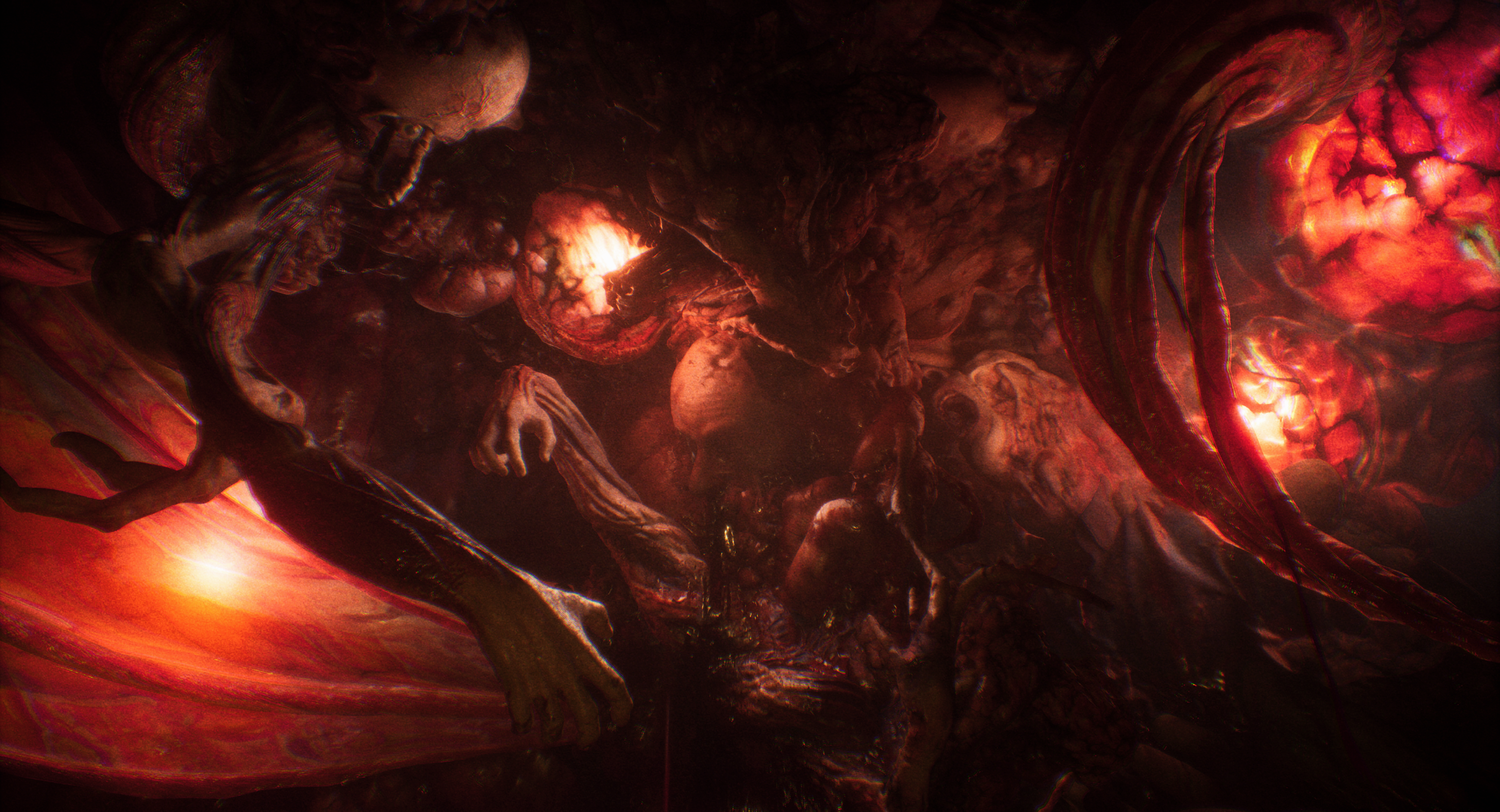
Just as Lumen enabled the developer to bring its naturalistic concept to life, Nanite in Unreal Engine 5 meant previously omitted detail could now be included. Drawing inspiration from body horror and movies such as The Thing, the crew of the rig in Still Wakes The Deep have been bent, warped and mutated into something unimaginable. Occasionally you are hunted by these creatures, often hidden in fog and mist, but later in the game we see them embedded in walls and growing from the organic tendrils that have taken over the rig.
"There's a kind of terrible beauty in the way the curves of the shapes, and the colours, and the wetness, and everything, that creates a sort of sculpture of that person," details Laura. She explains how the body horror can have a rainbow shimmer as oil mixes with the creature's nature, and creates iridescence colours "like blown glass" and the "the colours that you find inside your body" come to the fore.
Laura gets excited and describes: "If your body was exploded out you would see all your organs are different colours. You've got like reds and yellows and pinks and purples… [the designs needed] to have these gory, organic, realistically fleshy textures and colours but also these iridescent oily beautiful rainbow colours."
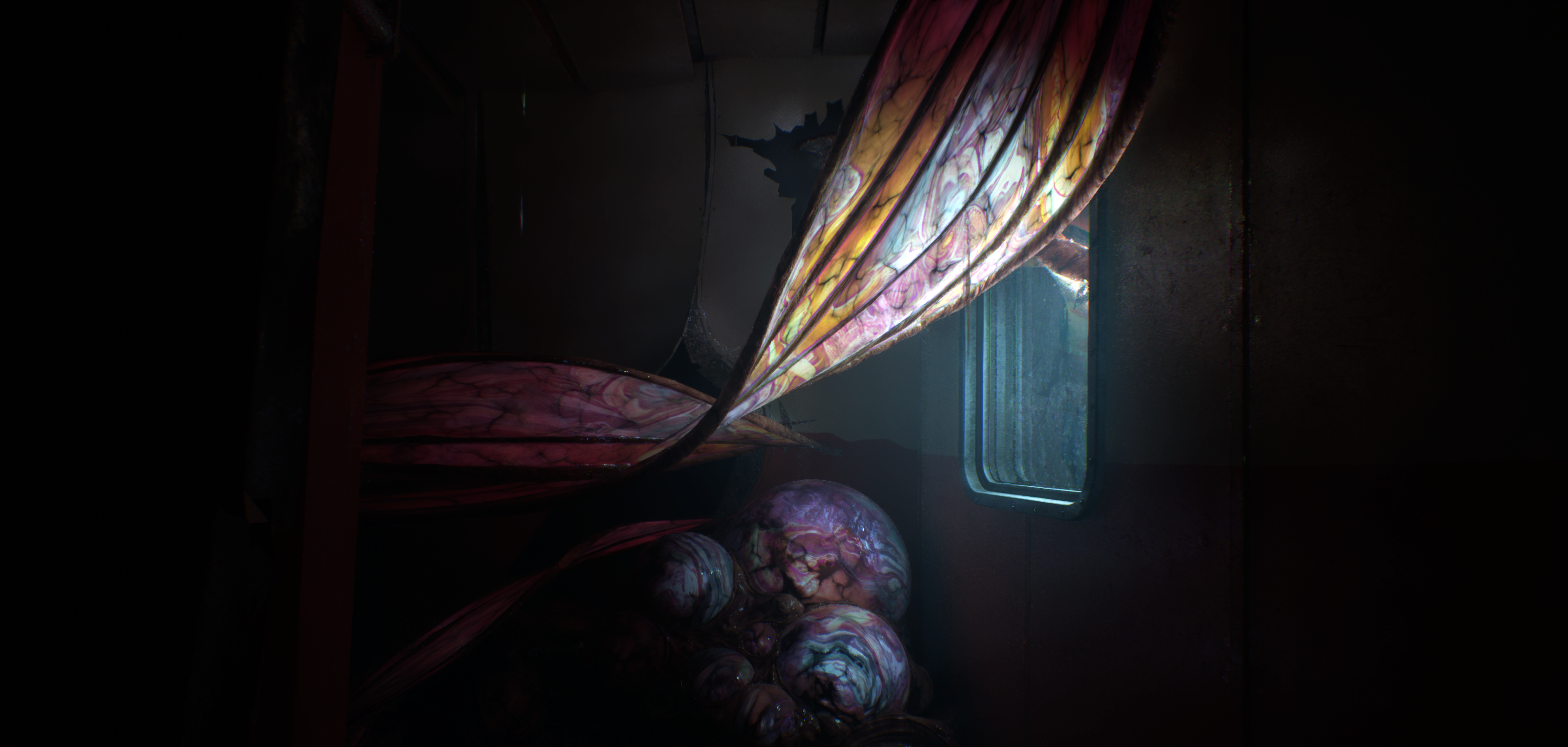
All of this detail could have been lost if The Chinese Room had stuck with Unreal Engine 4, reveals Dominique. He tells me a lot of the detail was being optimised and potentially removed until the team switched to Unreal Engine 5 and made use of Nanite.
Dominique explains how an artist was hired specifically create some of the organic body horror in the game, "a very creative person [who] would sculpt these fascinating, intricate things," but normally this would get lost, "all that sculpt detail" would be removed, because the team had to optimise the game for UE4. Then they moved to UE5 and Nanite and "suddenly we were like, 'oh we can keep everything', so that was just an opportunity… We couldn't really resist".
Dominique talks about how he loves the static transformations that players can walk past and through, that twist and change the rig's structure. He says: "you can see how it tears things apart or has its own beautiful shapes […] working on that was such a fun, artistic experience". He adds that moving to Unreal Engine 5 was "a risk" but one that "totally paid off, like 100%, it's really fun tech".
Creating contrasting moods
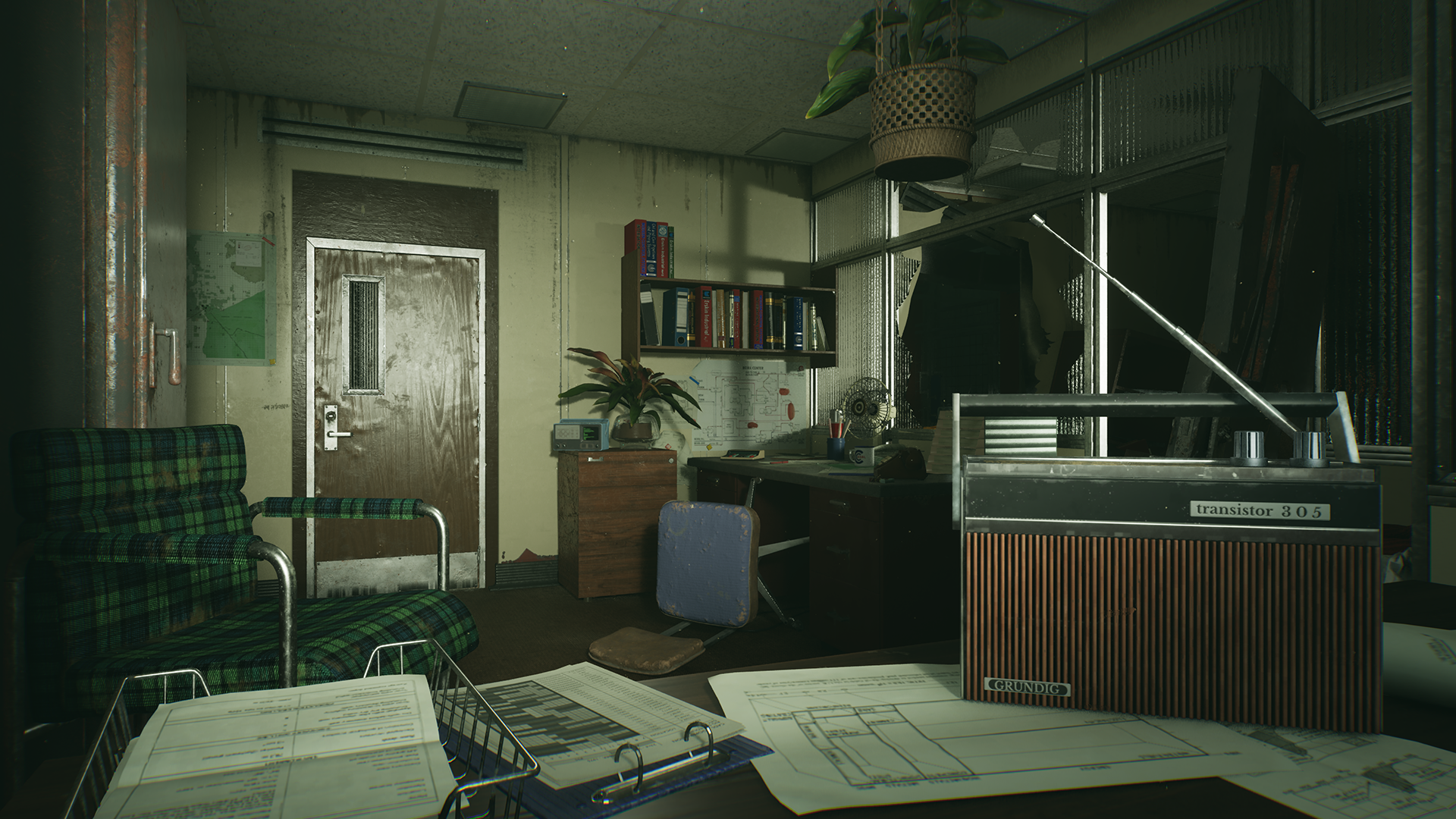
Dominique sums up the art direction and everything we've discussed about Still Wakes The Deep as "the constant pull and push between opposing forces [it] needs to be horrifying and scary, but it needs to be beautiful and fascinating".
He highlights how this contrast is played out in the environment design, juxtaposing the colourful, organic horror with the "mundanity to some of the brown corridors and the warm carpets and working life and an oil rig", a 1970s naturalism that gets invaded by "experimental 2001 Kubrick strange, 1970s colourful psychedelia."
That sense of experimentation comes through as Laura shares how the team accidentally discovered an alarming, fidgety animation for a main creature that hunts the player from the fog by launching slim, sharp tendrils.
We had an animation and then something glitched with it […] it was terrifying because it was unexpected
Laura Dodds, associate art director, The Chinese Room
She explains: "The animation is an interesting one because we actually were inspired by a bug that happened. We had an animation and then something glitched with it, and it was twitching and rolling around on the floor and it looked very messy but it was also terrifying because it was unexpected; you didn't know where to anticipate it was going to move and you couldn't quite catch glimpses of it."
The golden rule of horror games is to not reveal the creature, so this animation combined with the low-light fog and mist makes for a terrifying encounter. "We pushed our design into something where you catch a little bit of cloth, a little bit of bone, a bit of flesh, a bit of organ and like the whole thing being just catching little fragments or little glimpses," recalls Laura, adding: "The power of Unreal allowed us to actualise it."
Experimentation brings it all together
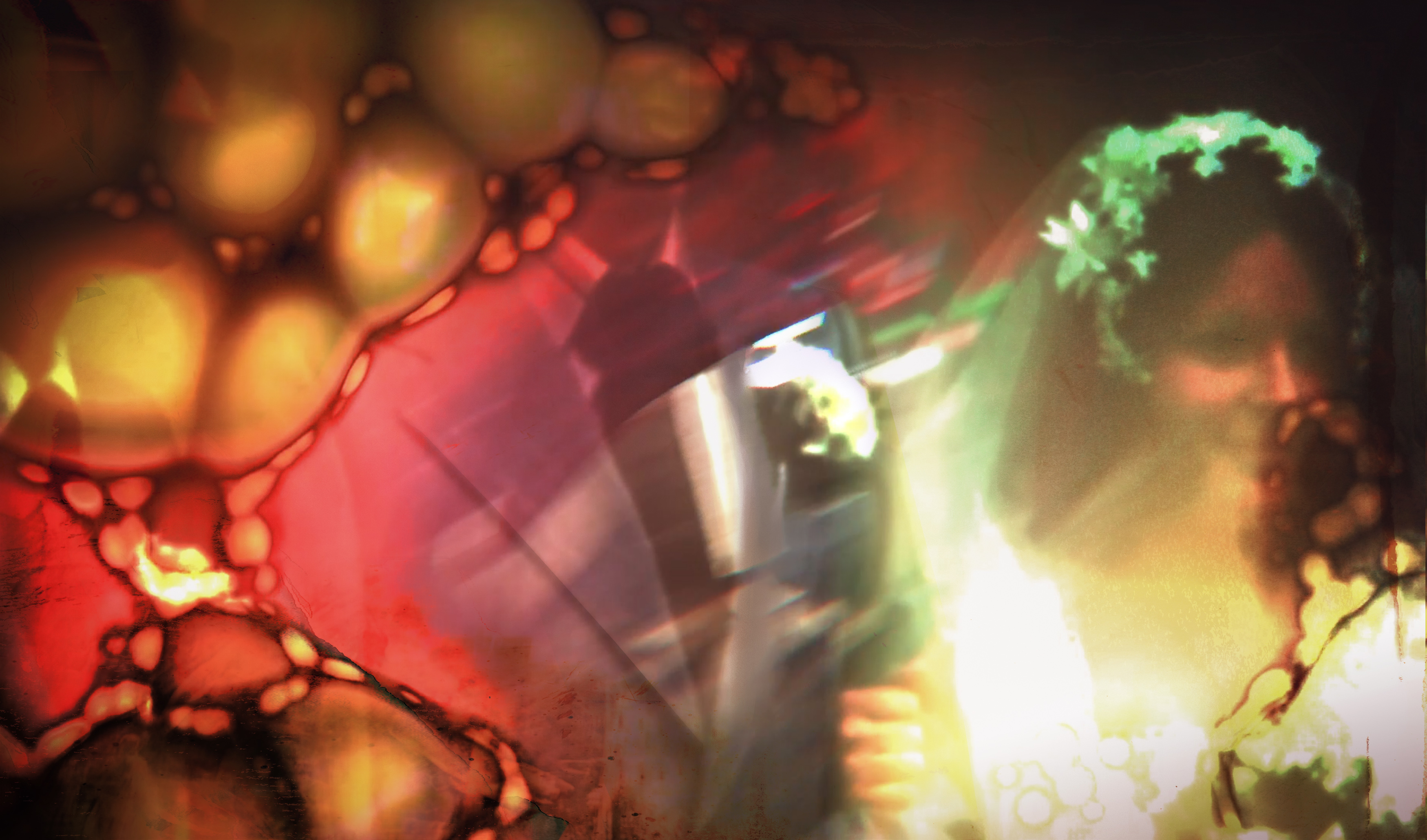
The art team's playful approach to design is found in every corner of Still Wakes The Deep, literally. As the player approaches areas the 'horror' has taken over the screen boils and ruptures, as it does when protagonist 'Caz' meets a gruesome fate. It resembles burning 8mm footage, and for good reason, because it is burnt, boiled and battered 8mm film stock.
"This is one of the visuals that I really wanted to push into the game," says Laura excitedly, having stumbled onto the associate art director's pet project. The effect came out of experimenting with layering and over-laying film stock and experimenting with a "2001 trippy design".
The tie-in to Still Wakes The Deep became too much to resist as Laura took inspiration from films like Don't Look Now and Rosemary's Baby, a time when certain films "feel like cursed artefacts", to create something very graphic, tactile and filmic. Working with the artist Sam Spreckley, who burns and buries film stock, the art and tech team experimented with recreating the same effects - making "procedural bubbles" that bend, burst and burn on screen with light and colour and charring, and with the bubbles are videos of the protagonist's memories. "It's a motif for something that's very internal and psychological," reflects Laura.
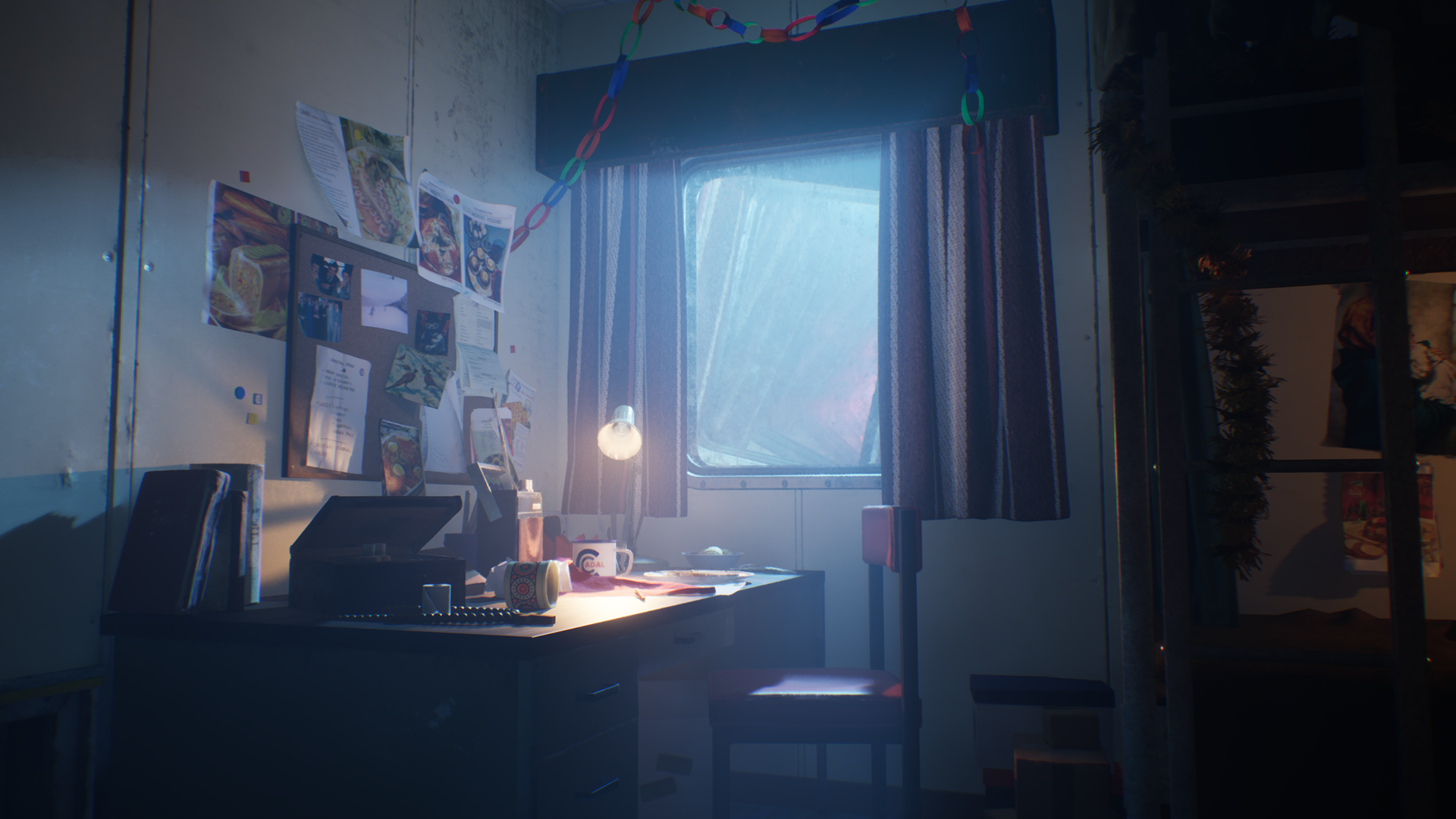
[We're] tempering the threat and the horror with very human emotions and fear
Laura Dodds, associate art director, The Chinese Room
Rounding out my time with Laura and Dominique on this artistic moment that permeates the game reveals how much time and creative effort has gone into every corner of the game - from where specific drops of water appear to photos of a characters' family in their room and knowing they'll never go home.
This gets to the heart of the art direction behind Still Wakes The Deep, where narrative and design work together. "[We're] tempering the body horror with beauty, tempering the threat and the horror with very human emotions and fear," reflects Laura before smiling and saying, "maybe I just love making the player cry".
Inspired by The Chinese Room's use of Unreal Engine 5? Then read our deep dives in how Gunfire Games made use of the tech when creating Remnant 2: From The Ashes and how it was used in Nightingale.







